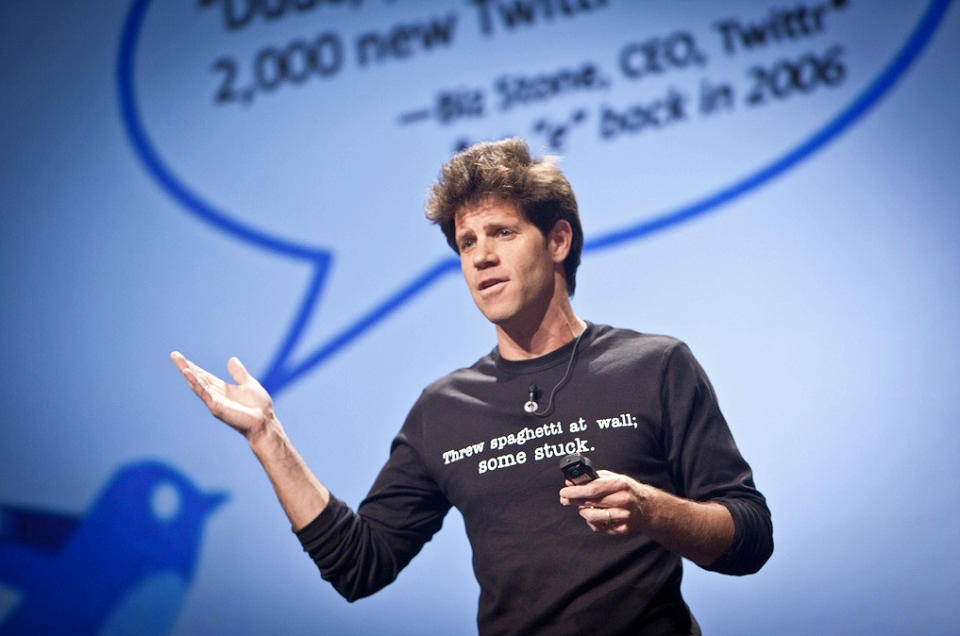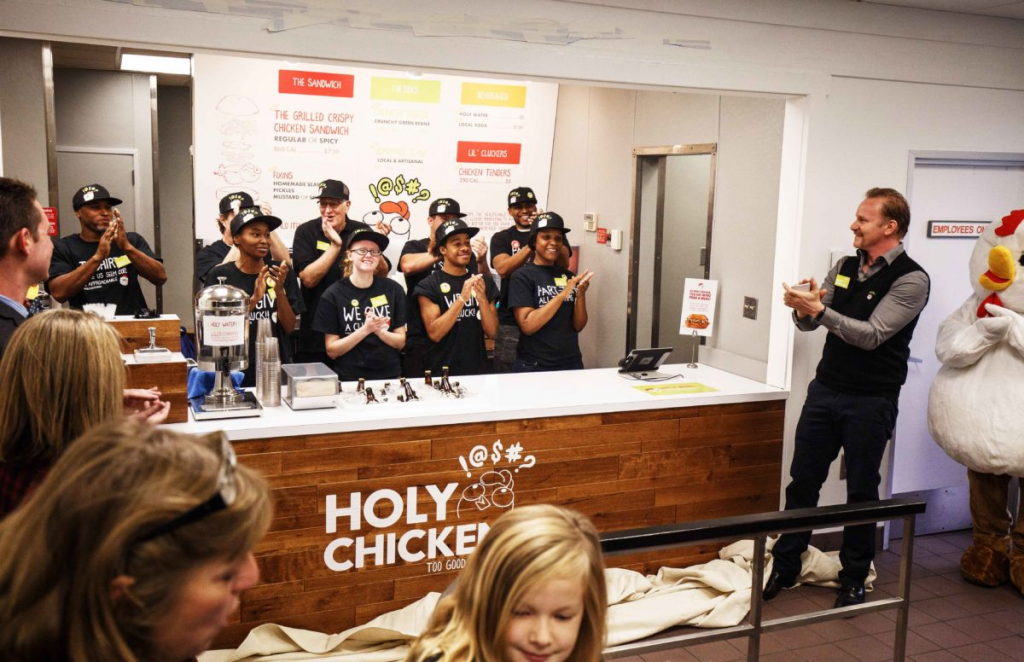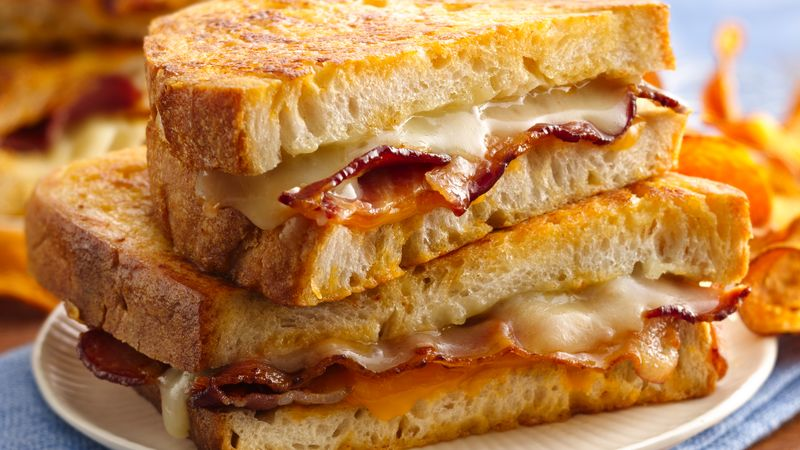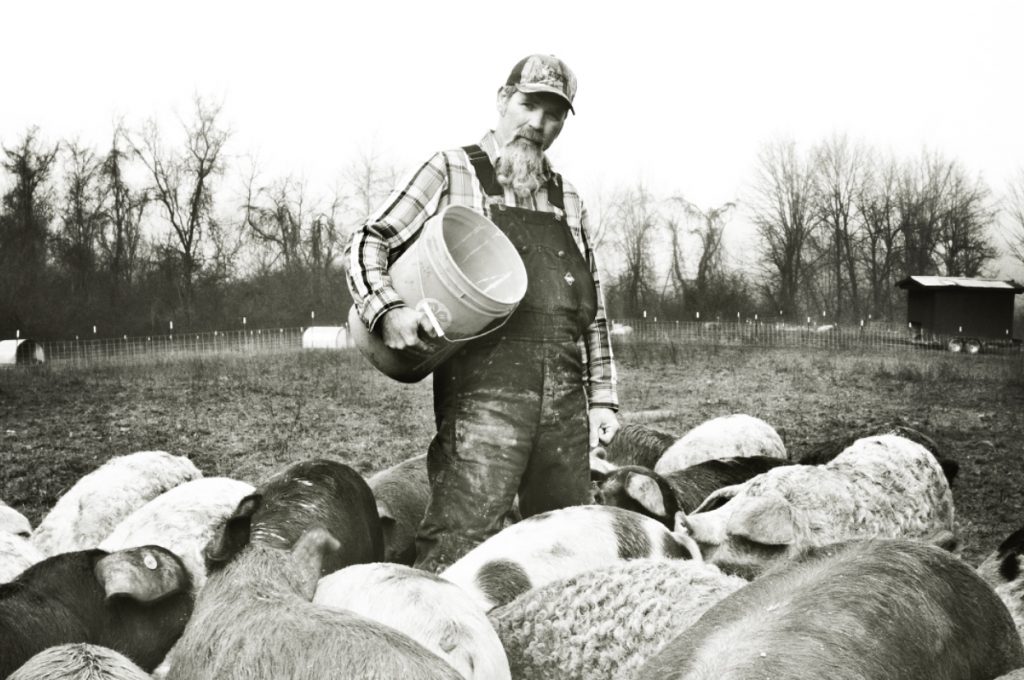Originally published in the January 2017 issue of (614) Magazine

Sharing stories around a campfire is among our most enduring traditions. From the primitive survival tips of our earliest ancestors to complex cautionary tales of love and loss, language remains the common currency of the human experience. But now we have a bigger campfire, spreading light and heat to everyone within reach of a keyboard or constantly connected device we carry in our pockets. That’s where Larry Smith is in his element, helping strangers rediscover the ancient art of storytelling by distilling it down to six simple words.
The Six-Word Memoir project started as a stopgap solution for SMITH Magazine, an online rendezvous for writers that launched just as social media was redefining the rules for every internet interaction. Of course, it’s hard to foresee the future from ground level. But Smith somehow did, even as corporations and his contemporaries in what we call “old media” struggled to see over the obvious horizon. Never minding the naysayers, Six-Word Memoirs tapped into something deft, yet diminutive. From boardrooms to classrooms, suicide prevention to speed dating, the platform defied critics by effectively elevating kitsch to cause almost overnight.
After a decade of didactic self-disclosure, it would be easy to descend into diatribes about Marshall McLuhan, the medium is the message, and other pointy-headed punditry. Though there is merit in analyzing the mental mechanisms behind the movement, it was never intended as an indulgent, academic exercise. Nor are there the fading flames or faint flickers of a dying fire. The effort keeps evolving to reach unlikely audiences and amateur auteurs whose unspoken autobiographies offer an intimate perspective that pierces the darkness with a few soulful syllables.
Having settled in Columbus after several stints in hipper haunts, Larry Smith kicked back for coffee to reflect on ten years of Six Words — an idea that keeps reinventing itself.
“I’M SURE YOU’VE ANSWERED THIS BEFORE.”
You’re essentially a superhero of short-form storytelling. Yet some are still unfamiliar with the six-word concept. What was the inspiration? Tell me your origin story?
I love origin stories. When I’m introduced, it’s often just “This is Larry Smith of Six-Word Memoirs” and someone might say, “Oh, you’re that six-word guy?” I like superhero better. The origin story is a literary legend, which some of your readers may know. Ernest Hemingway was once challenged to write a six-word novel in a bar bet, where many literary legends begin. As the story goes, Hemingway wrote, “For sale: baby shoes, never worn.”
In January of 2006, I left a traditional journalism career working mostly in print magazines, but some web — Men’s Journal, ESPN Magazine, Dave Eggar’s Might, POV, Yahoo! Internet Life, which was like the people’s WIRED. I saw the user-generated content explosion coming as kind of the tech culture guy at all of these magazines.
Telling stories is hot, in almost an amusing way. It’s always been hot in film and television. But it’s hot in advertising now, because technology finally caught up with what we’ve always wanted to do. Telling stories, recording music, creating art — our ability to share these stories through Facebook, Twitter, and Six-Word Memoirs has become more easy, and addictive.
So I did something crazy and left a career I really enjoyed and I started SMITHMAG.net on January 6, 2006 on National Smith Day, which is one of those days you get if enough people sign a petition. But it was a good media hook. I launched a user-generated content magazine where anyone could tell a story. But Six-Word Memoirs wasn’t part of it.
“YOU’VE GOT TO BE KIDDING US?”
Online magazines were a tough sell back then, especially without some sort of parallel print product. How did your early partnership with Twitter propel Six-Word Memoirs into the popular culture?
Toward the end of the first year, people loved it — but it wasn’t a business. It wasn’t generating enough traffic. “Threw spaghetti at wall; some stuck.” is one of my favorite six-word memoirs, and that’s what I did. I remembered the Hemingway legend and thought, “What if we gave it a personal twist?”
So we Googled “six-word memoir” and nothing came up.
That was it — we called it “Six-Word Memoirs”. It was going to be a month-long contest and the best six-word story would win an iPod, which was a good prize back in 2006. Right before we launched, I called up these guys I’d met at a tech conference with a side project called Twitter. This was when you could call Twitter and Jack Dorsey would answer the phone. We’d talked about doing a project with SMITH MAG and they thought it was great. So anyone could enter a story about any part of their lives, their whole life, an epitaph, how you’re feeling today, whatever. But if you wanted to win the iPod, you had to sign up for this funny little thing called Twitter. We crowd-sourced the decision to some interns and friends and the winner was, “Barrister, barista— what’s the diff, Mom?” from a Silicon Valley engineer named Abigail Moorhouse. The response was overwhelming. We were receiving tens of thousands of six-word memoirs — which at the time all came to my email box. Obviously now we curate it and built the site around it.
“SIX WORDS AREN’T REALLY SO SIMPLE.”
Between the ease of the app and the confines of the format, there’s a surprising amount of intimacy on the site, the kind that maybe gets lost or overlooked in social media platforms without that six-word limit. How is this a fundamentally different experience?
It can get very deep, even though it’s short. I call it ADDeep.
We have power users on the site who have posted ten even twenty thousand six-word memoirs. They post eight to ten times a day almost like a Facebook status. Some are silly, but some are profound.
We have lots of six-word memoirs about the most emotional times in people’s lives — the birth of a child or a battle with cancer. If you go to the site as a major event is unfolding — like a mass shooting, a plane lands on the Hudson, or the death of someone like John Glenn — people share their thoughts and reflections. And because we aren’t as big as a Twitter or Facebook, people really have a sense that in our smaller community they are being heard.
When Bowie died? Whoa. Our users were able to become part of that narrative. The constraint fuels creativity.
“SOME COUPLES SHARE EVERYTHING. SOME DON’T.”
My wife and I met in journalism school, which means she’s either the first person to read something I’m writing—or the last. What’s it like having two writers under the same roof? How did your Six-Word experience influence your wife’s memoir?
My wife, Piper Kerman, wrote the memoir Orange is the New Black based on her own experience serving 13 months in federal prison for a crime she committed a long time ago. So, we’re both in the storytelling business. She teaches writing in two state prisons outside of Columbus, Marion and Marysville.
She is a reluctant memoirist, and a more quiet and introverted person than I am. I’m much more unfiltered than she is, which isn’t a criticism. It’s just a style and approach. Many people have a memoir inside them, but she was never like, “I want to write a book about my life.”
Everyone has an interesting story if you poke around, but when she got out of prison, people were curious. And when she went into prison, there were really no books for women. They were all about the experiences of men. People were hungry to hear about it and she felt a deep obligation to tell not just her story, but the stories of the other women as well — who they are, where they came from, and what happens to them when they get out.
I encouraged her to write it, and knew she was a great writer from living with her all those years. We have a friend who used to joke long before Piper went to prison and wrote the book that she was the better writer in the house because she would edit things I wrote and she was so good. But after getting her letters while she was in prison, it was undeniable. She’s absolutely the better writer.
“IS STORYTELLING A CALLING, OR A CURSE?”
Columbus is known a test market for all sorts of products, and we’re proud of it. How did Columbus come to be the Six in the City prototype— a city of storytellers?
What I learned from Six-Word Memoirs is that I went from journalist, which I liked a lot, to someone who builds community through storytelling, which I love.
People sometimes ask if I ever get bored with Six Words. But it’s really just a tool to get people to open up about themselves. If I’m working with a Mosaic class, or Columbus School for Girls, or Independents’ Day with pieces of paper and a clothesline barking for Sixes, and that’s never boring.
Giving people agency over their lives, to be the protagonist in their own stories is empowering. I once had a teenage girl get up on stage at the Harmony Project and say, “Yes, I’m pregnant, but I’m graduating.” And they clapped. She was owning her story.
Six in the City tells the story of an entire community. I had initial meetings in New York, talked to folks with the city, and I’d get a call back three months later.
I didn’t intend to launch Six in the City in Columbus. But when I got here and looked around, and started to understand the community vibe, everyone I talked to in Columbus said yes.
Do you want to have a meeting? “Yes.” Do you want to move forward? “Yes.” Columbus is a “Yes” city. If you have an idea, and you’re willing to work hard, Columbus will help you make it happen — the city, the people, the community, everyone.
We came here two times before we decided to move here. There was an event at the Jewish Community Center, and we went out to dinner afterwards. We didn’t have any family ties or friends here. We came back one more time and my wife and I decided right then, “Let’s do this. Let’s get a house”. I was tired of that Brooklyn apartment anyway. It wasn’t a difficult decision. Now, I’m an ambassador for Columbus. ▩


